
Introduction: The Interconnected Nature of Mind-Body Wellness
In today’s fast-paced world, over 44 million Americans experience mental health challenges annually, while chronic diseases linked to poor physical habits affect nearly 60% of adults. This alarming statistic reveals a critical truth: mental wellness and physical wellness aren’t separate entities competing for attention—they’re interconnected systems that either support or sabotage each other.
The modern wellness paradox presents an interesting challenge. Despite having access to more health information than any generation before, people struggle more than ever with achieving genuine well-being. Social media feeds overflow with wellness tips, fitness influencers promote the latest trends, and bookstore shelves buckle under the weight of self-help guides. Yet stress levels continue climbing, and the gap between knowing what’s healthy and actually living healthily widens each day.
Mental and emotional health forms the foundation of how individuals experience life, while physical health determines their capacity to engage with it fully. These dimensions of health and wellness work together like gears in a finely tuned machine—when one falters, the entire system struggles.
This comprehensive guide offers evidence-based, practical hacks designed specifically for busy lifestyles. Rather than promoting another temporary fix, it focuses on sustainable strategies that honor the reality of modern life while building genuine, lasting wellness habits.
Balance doesn’t mean perfection—it means creating a flexible, personalized approach that adapts to life’s inevitable changes while maintaining core practices that support both mind and body.
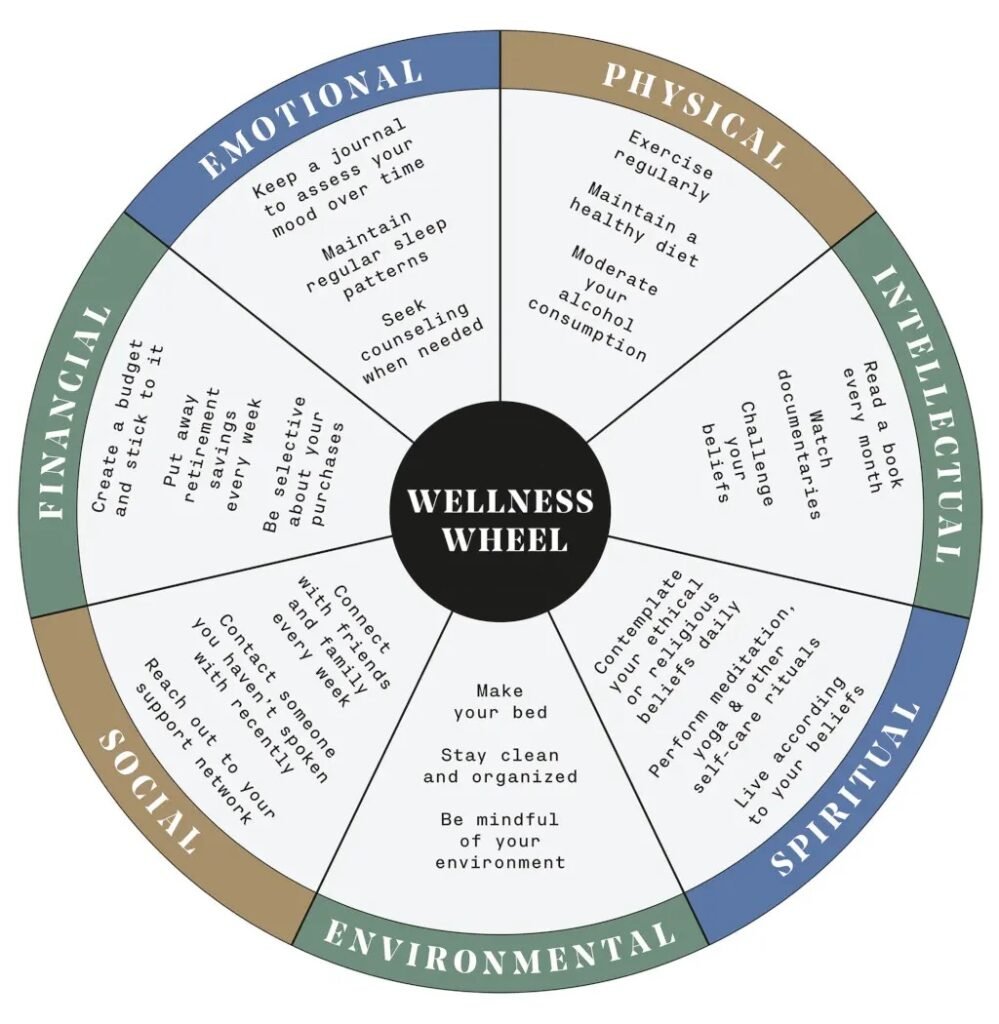
The Science Behind Mind-Body Connection
Understanding the Physiological Links
Modern neuroscience has revealed fascinating insights into how mental health and fitness influence each other at the cellular level. When someone experiences chronic stress, their body doesn’t distinguish between a looming work deadline and a charging tiger—the physiological response remains remarkably similar.
The stress response system triggers a cascade of hormonal changes that impact every system in the body. Cortisol levels spike, inflammatory markers increase, and the immune system shifts into a state designed for short-term survival rather than long-term health. This response, while evolutionarily advantageous for immediate threats, becomes destructive when activated continuously by modern life’s persistent stressors.
Neuroplasticity research demonstrates that the brain can literally rewire itself through physical practices. Regular exercise doesn’t just strengthen muscles—it promotes the growth of new neural connections, particularly in regions associated with memory, emotional regulation, and executive function. This biological plasticity explains why physical activity consistently ranks as one of the most effective interventions for improving mental wellbeing.
The inflammation connection creates a particularly vicious cycle. Mental stress triggers physical inflammation, which then contributes to mental fog, mood disruption, and decreased motivation for healthy behaviors. Breaking this cycle requires addressing both the mental and physical components simultaneously.
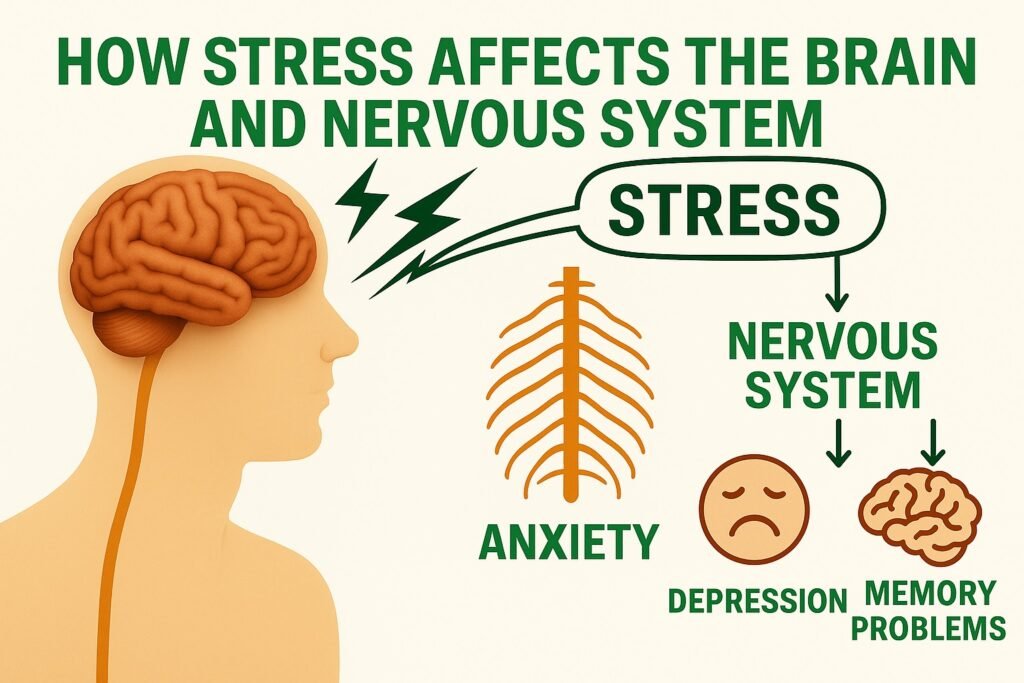
The Bidirectional Influence
Research consistently demonstrates that physical health significantly affects mood regulation and cognitive function. Exercise acts as a natural antidepressant by increasing endorphin production, promoting neuroplasticity, and providing a sense of accomplishment and mastery. Regular movement patterns help regulate neurotransmitter production, supporting stable moods and improved emotional resilience.
Conversely, mental state profoundly impacts immune function and physical health outcomes. Positive psychology research reveals that individuals with optimistic outlooks show stronger immune responses, faster healing times, and reduced inflammation markers. The mind’s influence on physical health extends far beyond placebo effects—it represents measurable, biological changes that impact longevity and quality of life.
Sleep serves as perhaps the most critical bridge between mental health wellness and physical health. During sleep, the brain’s glymphatic system activates, literally washing away metabolic waste that accumulates during waking hours. Poor sleep quality disrupts this cleansing process while simultaneously impairing emotional regulation, decision-making abilities, and physical recovery.
The gut-brain axis represents another fascinating connection point. The digestive system contains more neurotransmitter receptors than the brain itself, earning the nickname “second brain.” Digestive health directly impacts mental clarity, mood stability, and even personality traits, while stress and emotions significantly influence digestive function and nutrient absorption.

Mental Wellness Foundation Hacks
Mindset and Cognitive Strategies
The 5-Minute Morning Mindset Reset
Starting each day with intentional mental practices sets a positive tone that influences every subsequent decision and interaction. The five-minute morning reset combines three powerful micro-practices that compound throughout the day.
The gratitude micro-practice involves identifying three specific things to appreciate each morning. Rather than generic gratitude, this practice encourages detailed appreciation—noticing the warmth of morning sunlight streaming through a window, feeling genuinely thankful for a comfortable bed, or appreciating the aroma of fresh coffee. This specificity trains the brain to notice positive details throughout the day.
Intention setting differs dramatically from creating overwhelming to-do lists. Instead of focusing on everything that needs accomplishing, intention setting involves choosing one or two qualities to embody during the day. Someone might set an intention to remain patient during challenging conversations or to approach tasks with curiosity rather than pressure.
The breathing awareness technique involves three conscious breaths with full attention on the sensation of air entering and leaving the body. This simple practice activates the parasympathetic nervous system, creating a foundation of calm that supports better decision-making throughout the day.
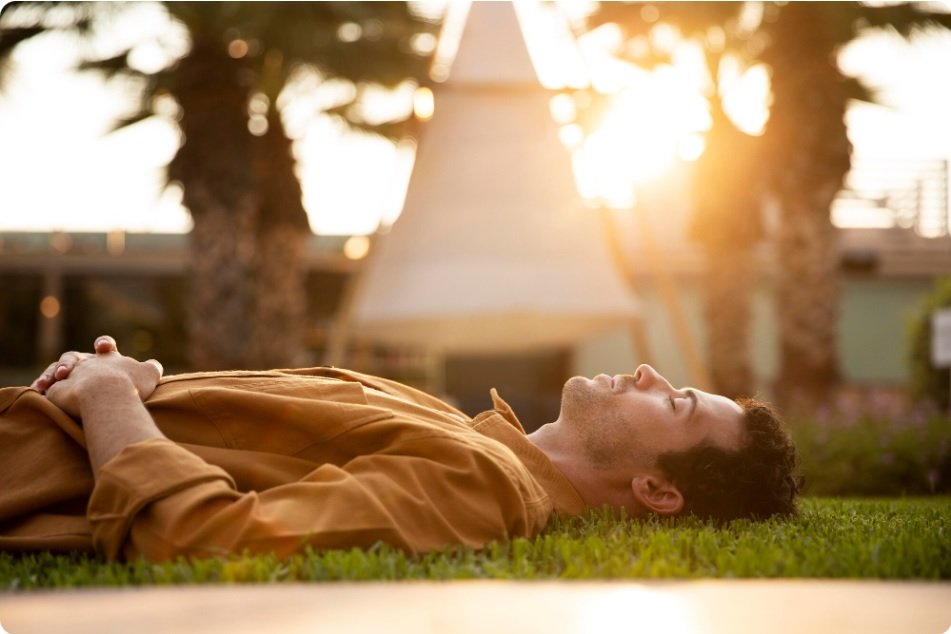
Cognitive Reframing Shortcuts
The “best friend test” provides a powerful tool for improving self-talk patterns. When negative self-criticism arises, individuals can ask themselves: “Would I speak to my best friend this way?” This simple question often reveals the harshness of internal dialogue and naturally guides toward more supportive, constructive self-communication.
Perspective shifting in 30 seconds involves asking three quick questions: “Will this matter in five years?” “What would someone I admire do in this situation?” and “What opportunity might be hidden in this challenge?” These questions don’t minimize real difficulties but help maintain perspective during overwhelming moments.
Converting “I have to” into “I get to” represents a simple linguistic shift with profound psychological impact. “I have to exercise” becomes “I get to move my body,” and “I have to work late” becomes “I get to contribute meaningfully.” This reframe acknowledges choice and privilege rather than focusing on obligation and burden.
Stress Management Micro-Interventions
The 4-7-8 breathing technique offers immediate stress relief that can be practiced anywhere without drawing attention. Individuals inhale for four counts, hold for seven counts, then exhale for eight counts. This specific pattern activates the vagus nerve, triggering the relaxation response within 60 seconds.
Progressive muscle release in two minutes involves quickly tensing and releasing major muscle groups. Starting with the shoulders, individuals tense for five seconds, then release completely while noticing the contrast between tension and relaxation. This practice can be done discretely in cars, offices, or waiting rooms.

Digital Boundaries That Actually Work
Phone-free zones and times create psychological breathing room in an always-connected world. Successful boundaries might include keeping phones out of bedrooms, establishing tech-free meals, or designating the first and last 30 minutes of each day as device-free periods.
Notification batching strategies involve checking messages and emails at predetermined times rather than responding to constant alerts. Many people find success with three check-in periods: morning, midday, and evening. This approach maintains responsiveness while preventing constant interruption.
Blue light management hacks include using warm lighting in the evening, wearing blue light filtering glasses during screen time, and utilizing device settings that automatically adjust screen warmth based on time of day.
Emotional Regulation Tools
The STOP technique provides a framework for managing intense emotions in real-time. When overwhelming feelings arise, individuals Stop what they’re doing, Take a conscious breath, Observe what they’re experiencing without judgment, then Proceed with intentional action rather than reactive behavior.
Emotional granularity practice involves expanding vocabulary for describing feelings beyond basic categories like “good” or “bad.” Someone might distinguish between feeling frustrated versus overwhelmed, or excited versus anxious. This precision helps identify appropriate responses and reduces the intensity of difficult emotions.
Energy audit practices help individuals identify emotional drains versus gains in their daily lives. People, activities, and environments either contribute to or deplete emotional resources. Regular energy audits enable conscious choices about where to invest time and attention.
Boundary setting scripts provide practical language for common situations. “I need to think about that and get back to you” creates space for decision-making, while “I’m not available to discuss that topic” establishes clear limits without lengthy explanations.
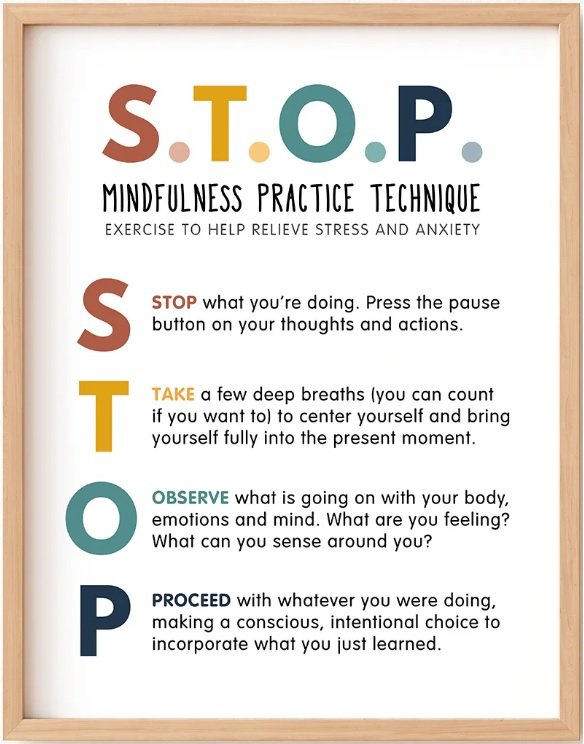
Physical Wellness Foundation Hacks
Movement Without the Gym
Micro-Workouts That Compound
Stair climbing protocols transform everyday navigation into fitness opportunities. Taking stairs two at a time engages different muscle groups than single steps, while walking up stairs backward (safely, with handrail support) activates often-neglected posterior chain muscles. Even brief stair climbing sessions significantly impact cardiovascular fitness when practiced consistently.
Desk-based strength exercises address the reality of sedentary work environments. Desk push-ups, chair squats, and calf raises can be performed in professional attire without breaking a sweat. These micro-movements combat the negative effects of prolonged sitting while boosting energy and alertness.
Walking meeting strategies revolutionize traditional conference room discussions. Many conversations become more creative and collaborative when participants move together. Walking meetings work particularly well for brainstorming sessions, one-on-one discussions, and phone calls.

Functional Fitness Integration
Household chore workouts transform mundane tasks into strength training opportunities. Vacuuming becomes a lunge workout, carrying laundry baskets up stairs provides functional lifting practice, and gardening engages core muscles while connecting with nature.
Commute optimization for activity might include parking farther away, getting off public transportation one stop early, or choosing stairs instead of escalators. These small changes accumulate significant activity over time without requiring additional time blocks.
Play-based movement for adults recognizes that exercise doesn’t have to feel like work. Dancing, playing with children or pets, recreational sports, or even active video games provide cardiovascular benefits while engaging the psychological benefits of play and joy.
Nutrition for Mental-Physical Synergy
Brain-Boosting Food Timing
Protein timing for stable mood involves eating protein within 30 minutes of waking to stabilize blood sugar and support neurotransmitter production throughout the day. Including protein with each meal and snack prevents energy crashes that trigger stress hormones and mood fluctuations.
Omega-3 rich snack ideas include walnuts, chia seed pudding, or canned sardines on whole grain crackers. These healthy fats support brain function, reduce inflammation, and promote stable mood regulation. The timing of omega-3 consumption matters less than consistency.
Blood sugar stability hacks involve pairing carbohydrates with protein or healthy fats to slow glucose absorption. This combination prevents the spike-and-crash cycle that contributes to irritability, fatigue, and cravings for unhealthy foods.
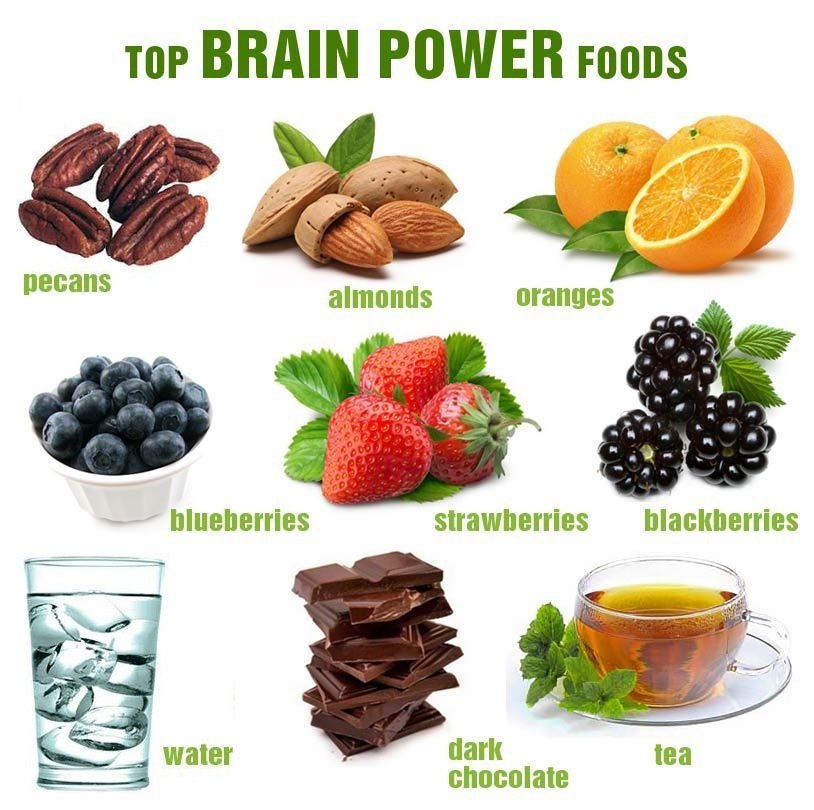
Hydration Beyond Water
Electrolyte balance for mental clarity becomes particularly important during stress, exercise, or illness. Natural sources like coconut water, sea salt in regular water, or homemade electrolyte drinks support cognitive function without the artificial ingredients found in many commercial sports drinks.
Herbal teas for specific benefits offer targeted support throughout the day. Green tea provides gentle caffeine with L-theanine for calm alertness, chamomile promotes relaxation in the evening, and peppermint supports digestion and mental clarity.
Natural energy alternatives to caffeine crashes include staying hydrated, eating balanced meals, taking short walks, or practicing brief breathing exercises. These strategies provide sustainable energy without the jittery highs and crushing lows associated with excessive caffeine consumption.
Recovery and Restoration
Sleep Hygiene Shortcuts
Temperature optimization tricks acknowledge that most people sleep better in cooler environments, typically between 65-68°F. Cooling the bedroom, using breathable fabrics, or taking a warm bath before bed (which actually cools core body temperature afterward) supports natural sleep patterns.
Light exposure timing involves getting bright light exposure within the first hour of waking to support circadian rhythm regulation, while dimming lights in the evening signals the body to prepare for rest. This natural rhythm supports both sleep quality and daytime alertness.
Pre-sleep routine streamlining focuses on consistency rather than complexity. A simple routine might include light stretching, reading, or listening to calming music. The key lies in performing the same activities in the same order each night to signal the body that sleep time approaches.

Active Recovery Techniques
Gentle stretching sequences address common tension areas while promoting relaxation. Focus areas typically include neck and shoulders (from computer work), hips (from sitting), and lower back. These stretches can be performed in pajamas before bed or in work clothes during break times.
Self-massage with household items utilizes tennis balls for trigger point release, frozen water bottles for foot massage, or rolled towels for back tension. These accessible tools provide many benefits of professional massage therapy at home.
Breathing exercises for muscle tension combine respiratory techniques with gentle movement. Deep breathing while slowly rolling shoulders or gently rotating the spine helps release physical tension while calming the nervous system.
Integration Strategies: Where Mental and Physical Meet
Holistic Daily Rhythms
The Power Hour: Combining Physical and Mental Practices
The power hour concept involves dedicating one concentrated period each day to practices that support both physical health and wellness simultaneously. This might include yoga (combining movement, breath work, and mindfulness), nature walks with gratitude practice, or strength training with meditation music.
Rather than viewing wellness practices as separate items on an endless to-do list, the power hour integrates multiple benefits into a single, sustainable time block. This approach honors busy schedules while ensuring that both mental and physical needs receive consistent attention.
The power hour can be adapted to any schedule—early morning for those who prefer starting the day with intention, lunch breaks for midday reset opportunities, or evening hours for those who need to decompress after work. The key lies in consistency rather than perfection, building this integrated practice into daily rhythm.
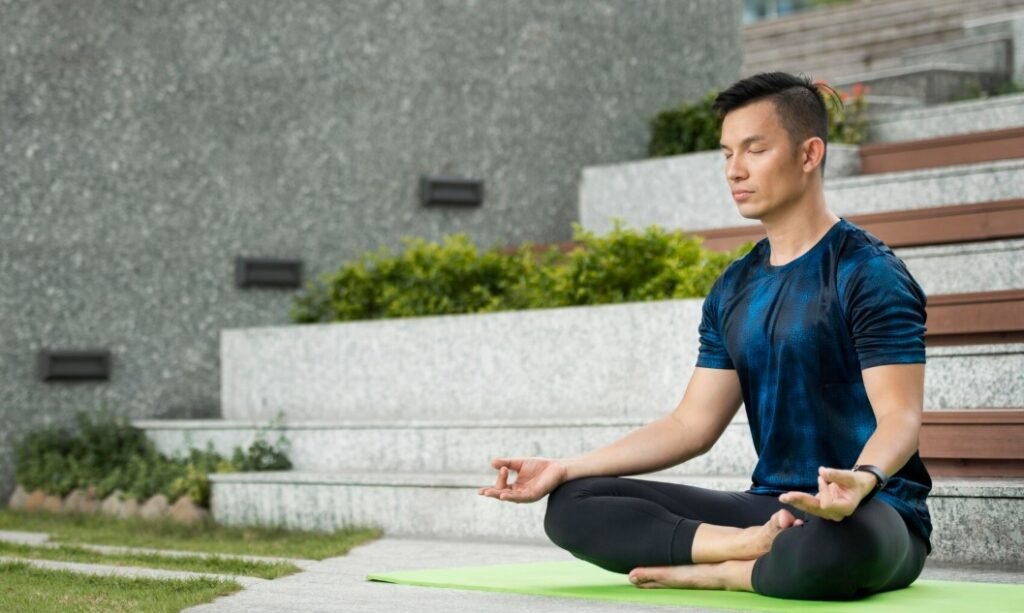
Energy Management vs. Time Management
Traditional time management focuses on fitting more activities into available hours, while energy management recognizes that human capacity fluctuates throughout the day. Good mental health requires aligning demanding tasks with peak energy periods while protecting low-energy times for restoration and gentler activities.
Identifying personal energy peaks involves tracking alertness, mood, and motivation patterns for several weeks. Some people experience peak mental clarity in early morning hours, while others hit their stride in late afternoon. Physical energy patterns may differ from mental energy rhythms.
Matching tasks to energy levels optimizes both productivity and well-being. High-energy periods suit challenging mental work, difficult conversations, or intense physical activities. Lower energy times work well for routine tasks, gentle movement, or reflective practices.
Recovery period planning acknowledges that sustainable wellness requires intentional rest and restoration. These aren’t signs of laziness—they’re biological necessities that prevent burnout and maintain long-term capacity for both mental and physical challenges.
Social Wellness as the Bridge
Connection Practices That Serve Both Domains
Walking meetings for relationship building combine physical activity with social connection, addressing multiple wellness dimensions simultaneously. Movement often facilitates more open, creative conversations while providing gentle exercise that doesn’t feel like additional obligation.
Shared physical activities strengthen relationships while promoting fitness. This might include hiking with friends, dancing with a partner, or joining recreational sports leagues. The social motivation often makes physical activity more enjoyable and sustainable than solo efforts.
Vulnerability exercises that build trust involve sharing authentic experiences and emotions with trusted friends or family members. This practice strengthens relationships while providing the mental health benefits of social support and emotional expression.
Community Accountability Systems
Wellness buddy partnerships pair individuals with similar health goals for mutual support and encouragement. These relationships work best when focused on process goals (daily walks, consistent sleep schedules) rather than outcome goals (weight loss, fitness achievements).
Group challenges that aren’t competitive focus on collective support rather than individual achievement. Examples might include group meditation commitments, community gardening projects, or shared healthy cooking experiments.
Supportive social media engagement involves curating online connections that inspire and encourage wellness practices. This might mean unfollowing accounts that trigger comparison or negative feelings while following those that share helpful tips, encouragement, and realistic perspectives on wellness journeys.
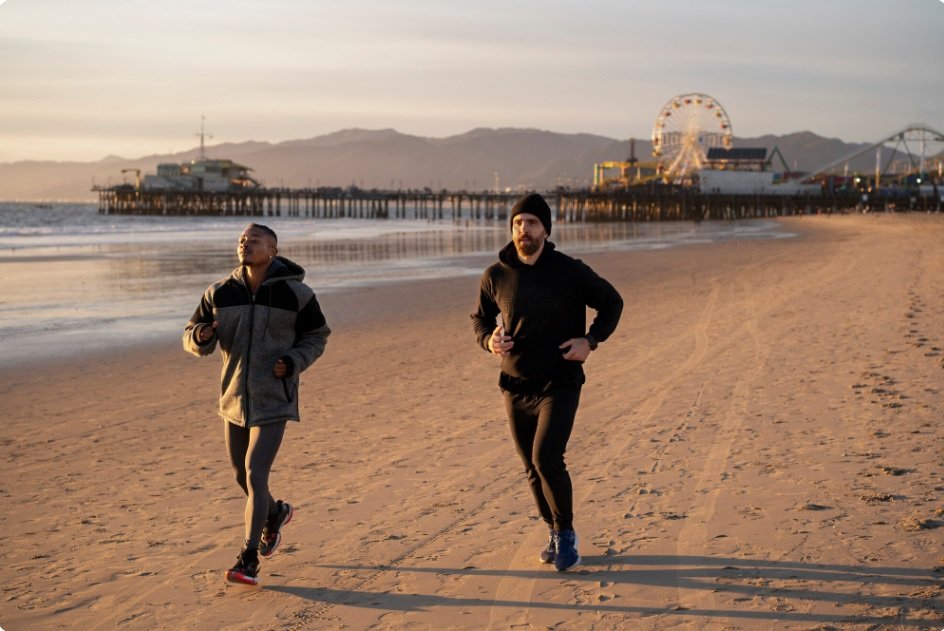
Purpose and Meaning Integration
Values-based wellness involves aligning health practices with personal values rather than following generic advice or social expectations. Someone who values creativity might choose dance or martial arts over traditional gym workouts, while someone who values community might prefer team sports or group fitness classes.
Service as self-care recognizes that helping others often provides significant mental and emotional health benefits while potentially incorporating physical activity. Volunteering for charity walks, helping elderly neighbors with yard work, or coaching youth sports combines service with personal wellness.
Legacy mindset thinking considers how current wellness choices impact future capacity to serve family, community, and personal goals. This long-term perspective often provides motivation during challenging periods when immediate benefits feel less compelling.
Personalization and Adaptation
Identifying Your Wellness Archetype
The Busy Professional: High-Efficiency, Low-Time Practices
Busy professionals need wellness strategies that integrate seamlessly into packed schedules without requiring additional time blocks. These individuals benefit from micro-practices, multitasking approaches, and efficiency-focused techniques.
Morning routines might include meditation during the commute, protein-rich breakfast preparation the night before, or brief stretching while coffee brews. Workday strategies could involve walking meetings, desk exercises during phone calls, or mindful eating during lunch breaks.
Evening practices focus on transition and recovery: changing clothes immediately after work to signal the shift from professional to personal time, taking brief walks before entering the home, or practicing gratitude while preparing dinner.
The Family-Focused: Inclusive Practices That Involve Loved Ones
Family-focused individuals need wellness practices that enhance rather than compete with family time. These approaches often model healthy behaviors for children while strengthening family bonds.
Active family time might include nature walks, bike rides, dance parties in the living room, or backyard games. Kitchen-based wellness could involve cooking healthy meals together, growing herbs or vegetables, or trying new recipes from different cultures.
Family mindfulness practices might include gratitude sharing during dinner, brief family meditation or prayer times, or bedtime routines that include reflection on the day’s positive moments.
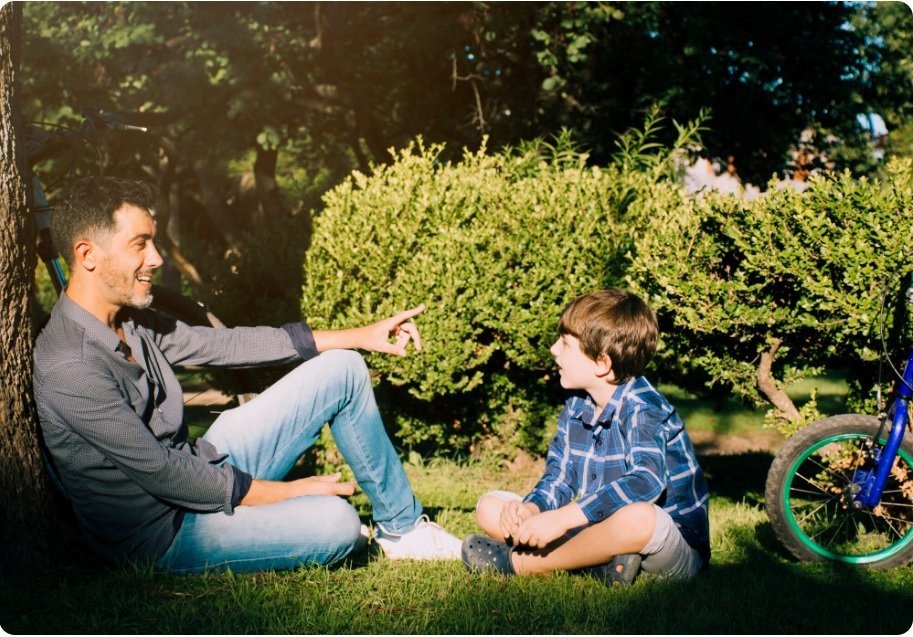
The Creative: Wellness Practices That Enhance Rather Than Structure Creativity
Creative individuals often resist rigid wellness routines that feel constraining or overly structured. They benefit from flexible approaches that support rather than schedule their natural creative rhythms.
Movement practices might include dance, martial arts, or nature walks without destination goals. These activities provide physical benefits while supporting the creative process through rhythm, flow, and inspiration.
Mental wellness practices could include journaling, artistic expression, music, or meditation practices that emphasize exploration rather than specific outcomes.
The Analytical: Data-Driven Approaches and Measurable Outcomes
Analytical personalities thrive with wellness approaches that include measurement, progression tracking, and evidence-based practices. They often enjoy experimenting with different techniques and measuring results.
Tracking might include sleep quality scores, mood ratings, energy levels, or physical performance metrics. The key lies in choosing meaningful measurements that reflect genuine well-being rather than becoming obsessed with numbers for their own sake.
Experimentation approaches involve systematically trying different techniques, measuring results, and optimizing based on personal response patterns.
Customization Strategies
Assessment Tools: Simple Self-Evaluation Questionnaires
Personal wellness assessment begins with honest evaluation of current habits, preferences, challenges, and goals. This might include tracking energy levels, mood patterns, sleep quality, and stress triggers for several weeks to identify patterns and opportunities.
Lifestyle assessment considers work schedules, family responsibilities, financial constraints, physical limitations, and personal interests. Effective wellness strategies must fit within real-life constraints rather than requiring major life restructuring.
Values assessment helps identify what matters most deeply to each individual. Someone who values adventure might choose hiking and rock climbing, while someone who values peace might prefer yoga and meditation. Aligning wellness practices with personal values increases intrinsic motivation and long-term sustainability.
Experimentation Framework: How to Test What Works for You
Systematic experimentation involves trying one new practice at a time for at least two weeks before adding additional changes. This approach allows accurate assessment of each practice’s individual impact without confusing multiple variables.
Measurement during experimentation might include daily energy ratings, mood scores, sleep quality assessments, or simple notes about how each day feels. The goal involves identifying patterns rather than achieving perfect data collection.
Decision criteria help determine whether to continue, modify, or discontinue each experimental practice. Criteria might include: Does this feel sustainable? Does it provide noticeable benefits? Does it align with my values and lifestyle? Can I imagine doing this for years rather than weeks?
Common Obstacles and Solutions
Time Constraints
Micro-Practice Stacking: Attaching Tiny Habits to Existing Routines
Micro-practice stacking builds wellness habits by attaching them to established daily activities rather than requiring separate time blocks. This approach leverages existing neural pathways while gradually building new patterns.
Examples might include practicing gratitude while brushing teeth, doing calf raises while waiting for coffee to brew, or taking three conscious breaths before starting the car. These tiny practices accumulate significant benefits over time without feeling overwhelming.
The key to successful habit stacking lies in choosing practices that naturally fit with existing routines and starting smaller than seems necessary. It’s better to successfully maintain one push-up after each bathroom break than to fail at completing a 20-minute workout routine.
Efficiency Hacks: Maximum Impact in Minimum Time
High-impact practices provide multiple benefits simultaneously. Examples include cold showers (which boost alertness, improve circulation, and build mental resilience), nature walks (combining exercise, stress relief, and vitamin D exposure), or meal preparation sessions (supporting nutrition while practicing mindfulness).
Compound exercises in fitness work multiple muscle groups simultaneously, maximizing physical benefits in minimal time. Squats, push-ups, and planks provide full-body strengthening that can be completed in less than 10 minutes.
Mental efficiency techniques might include mindfulness during routine activities (dishwashing, folding laundry), learning while exercising (podcasts during walks), or combining social connection with physical activity (walking phone calls with friends or family).
Motivation and Consistency
The Compound Effect: Understanding Long-Term Benefits of Small Actions
The compound effect explains how tiny daily actions create dramatic long-term results through consistency rather than intensity. A 10-minute daily walk may seem insignificant, but over a year it totals over 60 hours of physical activity and countless mental health benefits.
Understanding this principle helps maintain motivation during periods when progress feels slow or invisible. Like financial investments, wellness practices often show minimal immediate returns but create substantial long-term value.
Visual representations of the compound effect—such as tracking charts or progress photos—help maintain perspective during challenging periods. These reminders demonstrate that small daily choices are investments in future well-being rather than temporary inconveniences.
Progress Measurement Beyond Scales and Metrics
Traditional metrics like weight, speed, or strength measurements provide limited insight into overall wellness improvements. More meaningful indicators might include energy levels, sleep quality, mood stability, stress resilience, or relationship quality.
Process-focused measurement tracks consistency rather than outcomes. Did you complete your planned wellness practices? How many days this week included some form of movement? These metrics reflect factors within personal control rather than variables influenced by genetics, metabolism, or external circumstances.
Qualitative assessments might include weekly reflection questions: How did your body feel this week? What moments brought you joy? When did you feel most energized? These insights often provide more valuable information than quantitative measurements alone.
Information Overload
Simplification Strategies: Cutting Through Wellness Noise
The modern wellness industry creates overwhelming amounts of contradictory information, making it difficult to distinguish evidence-based practices from marketing hype. Simplification starts with focusing on fundamental principles rather than following every new trend.
Core wellness principles include regular movement, adequate sleep, stress management, social connection, and nourishing food. These basics provide the foundation for well-being, regardless of specific techniques or approaches used to implement them.
Information filtering involves choosing one or two trusted sources for wellness information rather than consuming content from dozens of different experts, influencers, or publications. This approach reduces confusion while building deeper understanding of consistent principles.
Personal Experimentation Over Popular Opinion
Individual variation means that wellness practices that work brilliantly for one person may provide minimal benefit for another. Personal experimentation provides more valuable information than following popular recommendations without testing their individual effectiveness.
Self-awareness development involves paying attention to personal responses to different foods, exercises, sleep schedules, and stress management techniques. This internal feedback often provides more accurate guidance than external advice.
Critical thinking about wellness claims involves questioning dramatic promises, considering potential conflicts of interest, and prioritizing approaches supported by research rather than testimonials alone.
Advanced Integration Techniques
Biohacking for Beginners
Heart Rate Variability Awareness
Heart rate variability (HRV) measures the variation in time between heartbeats, providing insight into autonomic nervous system balance and recovery capacity. Higher HRV generally indicates better stress resilience and overall health, while consistently low HRV may signal overtraining, chronic stress, or illness.
Simple HRV monitoring can be accomplished through smartphone apps or wearable devices that track this metric during sleep or designated measurement periods. However, the numbers matter less than understanding personal patterns and trends over time.
Improving HRV naturally involves many practices already discussed: regular sleep schedules, stress management techniques, consistent exercise (without overtraining), social connection, and limiting alcohol consumption. These lifestyle factors influence HRV more significantly than any single intervention.
Cold Exposure Benefits and Safe Practices
Cold exposure therapy, through cold showers, ice baths, or winter swimming, provides numerous benefits including improved circulation, enhanced immune function, increased mental resilience, and potential metabolic improvements. However, safety considerations are paramount.
Beginner cold exposure should start gradually with brief cold shower endings (30 seconds) and slowly increase duration as tolerance builds. The shock of sudden cold exposure can be dangerous for people with heart conditions, high blood pressure, or other health concerns.
Mental benefits of cold exposure often exceed physical benefits. Successfully managing discomfort in controlled circumstances builds confidence and resilience that transfers to other life challenges. The practice also provides immediate stress relief and mental clarity.
Natural Circadian Rhythm Optimization
Circadian rhythm optimization involves aligning daily activities with natural biological cycles to improve sleep, energy, mood, and overall health. This approach works with rather than against natural physiological patterns.
Light exposure represents the most powerful circadian signal. Getting bright light exposure within the first hour of waking helps establish healthy sleep-wake cycles, while dimming lights in the evening supports natural melatonin production.
Meal timing also influences circadian rhythms. Eating larger meals earlier in the day and avoiding late-night eating supports both metabolic health and sleep quality. Some people benefit from time-restricted eating patterns that align with natural circadian cycles.
Technology as Wellness Tool
Apps That Actually Help vs. Create Dependency
Wellness technology can either support healthy habits or create additional stress and dependency. Helpful apps typically provide gentle reminders, educational content, progress tracking, or guided practices without demanding constant attention or engagement.
Meditation apps, sleep trackers, and fitness apps work best when used as tools rather than authorities. They should support personal awareness and motivation rather than replacing individual intuition and self-knowledge.
Red flags for problematic wellness technology include constant notifications, shame-based messaging, comparison features that trigger competition, or apps that create anxiety when not used. Healthy technology relationships maintain user control rather than creating dependency.
Digital Detox Strategies
Digital detox doesn’t require abandoning all technology—it involves creating intentional boundaries that support rather than undermine well-being. This might include designated phone-free hours, social media sabbaths, or technology-free meals.
Notification management reduces constant interruption while maintaining necessary communication. This might involve turning off non-essential notifications, using do-not-disturb features during focused work or family time, or checking messages at designated times rather than responding immediately.
Alternative activities during digital detox periods include reading physical books, practicing hobbies, spending time in nature, engaging in face-to-face conversations, or participating in physical activities. These alternatives should feel engaging rather than punitive.

Measuring Success and Progress
Beyond Traditional Metrics
Qualitative Measures: Energy, Mood, Relationships
Meaningful wellness progress often shows up in qualitative improvements that resist easy measurement but dramatically impact daily life experience. Energy levels throughout the day, emotional resilience during challenges, and relationship quality provide more valuable indicators than weight or fitness benchmarks alone.
Energy assessment might involve rating morning alertness, afternoon stamina, and evening capacity for enjoyable activities. Sustainable wellness practices should increase overall energy rather than leaving individuals feeling depleted or exhausted.
Mood stability indicators include emotional resilience during stress, quicker recovery from setbacks, increased patience with family members or coworkers, and more frequent experiences of joy, gratitude, or contentment during ordinary moments.
Relationship improvements might include increased patience with loved ones, greater capacity for empathy and understanding, improved communication during conflicts, or enhanced ability to be fully present during social interactions.
Process-Focused vs. Outcome-Focused Tracking
Process-focused tracking measures consistency of healthy behaviors rather than specific results. This approach reduces frustration while building sustainable habits that create long-term benefits regardless of short-term fluctuations.
Process metrics might include: How many days this week included some form of movement? How consistently did you practice your evening routine? How often did you choose nourishing foods when hungry? These factors remain within personal control regardless of external circumstances.
Outcome-focused tracking (weight, measurements, performance benchmarks) can provide useful information but often creates frustration when progress feels slow or inconsistent. These metrics work best when combined with process-focused tracking rather than serving as the primary measure of success.
Long-term Sustainability Markers
Effortless Integration Signs
Sustainable wellness practices eventually feel natural rather than forced. Signs of successful integration include looking forward to daily movement, automatically choosing nourishing foods most of the time, naturally winding down in the evening without elaborate routines, and feeling genuinely motivated by wellness practices rather than guilted into them.
Flexibility indicators include ability to adapt practices to changing circumstances without abandoning them entirely. Someone with sustainable habits might do desk exercises when unable to take walks, practice brief meditation when longer sessions aren’t possible, or choose the healthiest available option when ideal foods aren’t accessible.
Internal motivation shifts from external pressure (“I should exercise”) to internal desire (“I feel better when I move my body”). This transition indicates that wellness practices have become personally meaningful rather than imposed obligations.
Evolution and Growth Mindset Markers
Growth mindset indicators include curiosity about new practices, willingness to experiment and adapt approaches, and viewing setbacks as learning opportunities rather than failures. This perspective supports long-term sustainability by preventing perfectionism and all-or-nothing thinking.
Continuous learning might involve reading about wellness topics, trying new movement practices, experimenting with different stress management techniques, or seeking input from healthcare providers. This ongoing education prevents boredom while optimizing personal approaches.
Self-compassion during difficult periods indicates mature understanding that wellness journeys include ups and downs. Rather than abandoning all practices during challenging times, individuals with growth mindsets adapt expectations while maintaining some level of self-care.
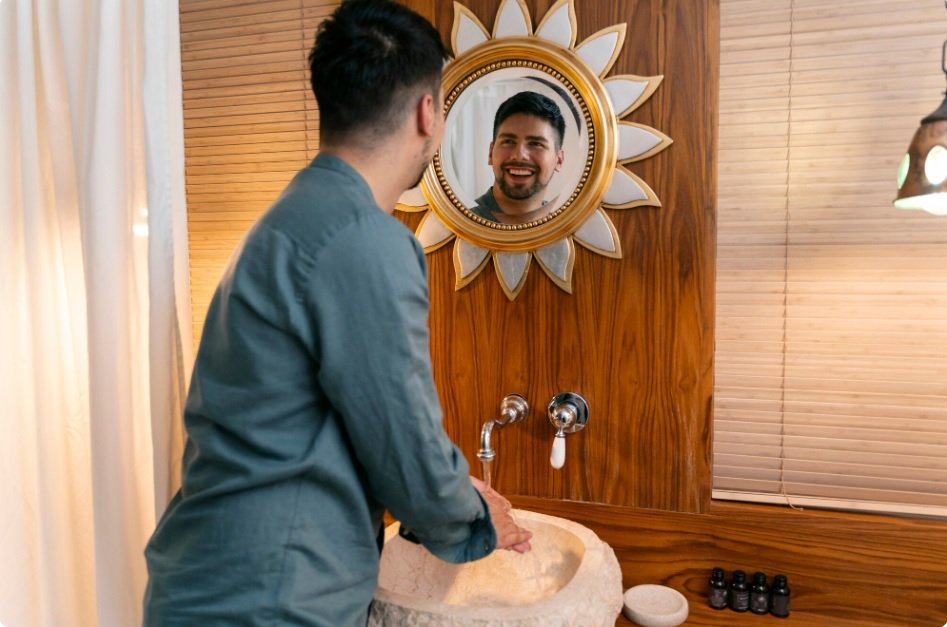
Building Your Balanced Life Blueprint
30-Day Implementation Plan
Week 1: Foundation Setting and Baseline Establishment
The first week focuses on establishing current patterns without making dramatic changes. This assessment period provides valuable baseline information while preventing overwhelm that often derails wellness attempts.
Daily tracking might include sleep duration and quality, energy levels throughout the day, mood patterns, current eating habits, and existing movement patterns. This information reveals personal rhythms and identifies specific areas for improvement.
Foundation practices during week one might include one simple morning routine element (such as drinking a full glass of water upon waking), one brief evening practice (like writing down three positive moments from the day), and one small movement addition (such as taking the stairs instead of elevators when possible).
Week 2: Mental Wellness Practice Integration
Week two introduces one primary mental wellness practice while maintaining week one foundations. This gradual approach prevents overwhelming changes while allowing adequate time to assess each practice’s impact.
Mental wellness options might include five-minute morning meditation, gratitude journaling before bed, brief midday breathing exercises, or evening reflection on the day’s positive moments. Choose based on personal preferences and schedule constraints.
Integration strategies involve attaching new practices to existing routines rather than creating separate time blocks. Meditation might occur during morning coffee, gratitude practice during evening skincare routines, or breathing exercises during work breaks.
Week 3: Physical Wellness Habit Building
Week three adds one sustainable physical wellness practice while maintaining mental wellness foundations from previous weeks. This might involve daily walks, morning stretching, evening yoga, or regular strength training.
Movement choices should align with personal preferences, physical capacity, and schedule realities. Someone who dislikes traditional exercise might choose dancing, gardening, or active hobbies rather than gym-based activities.
Success indicators include feeling energized rather than exhausted by movement, looking forward to physical activity most days, and noticing improvements in strength, flexibility, or endurance without obsessing over specific metrics.
Week 4: Integration and Personalization Refinement
The final week focuses on refining and personalizing the practices established during previous weeks. This might involve adjusting timing, modifying techniques, or finding creative ways to combine mental and physical practices.
Integration assessment involves evaluating which practices feel sustainable, which provide the most noticeable benefits, and which might need modification to better fit personal preferences and lifestyle constraints.
Future planning includes identifying potential challenges and developing strategies for maintaining practices during busy periods, travel, illness, or other disruptions that inevitably occur in daily life.
Creating Your Personal Wellness Manifesto
Values Clarification Exercises
Personal wellness manifesto creation begins with deep reflection on core values and what truly matters in life. This foundation ensures that wellness practices align with authentic priorities rather than external expectations or social pressures.
Values clarification might involve considering questions like: What kind of person do I want to be? How do I want to feel in my daily life? What legacy do I want to leave? What brings me genuine joy and fulfillment? These reflections guide wellness choices toward practices that support overall life satisfaction.
Writing exercises can help clarify values through stream-of-consciousness journaling, letter writing to future self, or creating lists of peak life experiences and identifying common themes. The goal involves discovering personal truth rather than adopting borrowed values from family, culture, or media.
Non-Negotiable Identification
Non-negotiables represent the absolute minimum wellness practices that maintain basic well-being during challenging periods. These might include minimum sleep requirements, essential movement practices, or critical stress management techniques.
Identifying non-negotiables requires honest assessment of what practices provide the most significant impact with the least time investment. For some people, this might be 20 minutes of daily movement; for others, it could be consistent sleep schedules or regular social connection.
Non-negotiables should feel achievable even during the most demanding life periods. They serve as the foundation that prevents complete wellness abandonment during temporary challenges while providing a launching point for expanded practices during easier times.
Flexibility Framework Development
Flexibility frameworks acknowledge that life circumstances change and wellness practices must adapt accordingly. This approach prevents all-or-nothing thinking while maintaining core principles during various life seasons.
Framework development might include identifying different levels of wellness practices: minimal maintenance level for crisis periods, sustainable daily level for normal circumstances, and expansion level for periods with additional time and energy.
Adaptation triggers help recognize when to adjust wellness approaches. These might include major life changes (job transitions, relationship changes, health challenges), seasonal variations, or shifts in available time and energy resources.
Support System Activation
Support systems significantly impact wellness success by providing encouragement, accountability, and practical assistance during challenging periods. These networks might include family members, friends, healthcare providers, or online communities.
Support identification involves recognizing who in current relationships would genuinely support wellness goals and who might inadvertently undermine them. This awareness enables strategic sharing of goals and seeking appropriate support from different people.
Professional support might include healthcare providers, mental health coaching professionals, fitness trainers, nutritionists, or therapists who can provide specialized guidance for specific wellness challenges or goals.

Sustainable Growth Planning
Quarterly Review and Adjustment Protocols
Quarterly wellness reviews provide regular opportunities to assess progress, celebrate successes, identify challenges, and adjust approaches based on lived experience rather than initial assumptions about what might work.
Review questions might include: Which practices have become natural and effortless? What obstacles have consistently interfered with wellness goals? How have life circumstances changed, and how might wellness practices need to adapt? What new practices feel intriguing to explore?
Adjustment protocols involve systematic modification rather than complete overhaul. This might mean changing timing of existing practices, substituting new activities for those that aren’t working, or adding complementary practices that address identified gaps.
Challenge Progression Pathways
Progressive challenge keeps wellness practices engaging while building capacity over time. This approach prevents boredom while honoring the body and mind’s natural adaptation processes.
Physical progression might involve gradually increasing exercise duration, trying new movement practices, or setting process-focused goals like consistency rather than performance benchmarks. Mental wellness progression could include longer meditation periods, more challenging stress management situations, or deeper personal development practices.
Challenge progression should feel inspiring rather than overwhelming. The goal involves gentle expansion of comfort zones rather than dramatic leaps that often lead to burnout or injury.
Community Building Strategies
Community building recognizes that sustainable wellness often requires social support and shared experiences. This might involve finding others with similar goals, sharing knowledge and encouragement, or creating accountability partnerships.
Online communities can provide support when local options aren’t available, though balance remains important to prevent social media from becoming a source of comparison or pressure rather than genuine support.
Local community building might involve joining fitness groups, wellness workshops, cooking classes, or volunteer organizations that align with personal values while supporting wellness goals.
Conclusion: Living the Balanced Life
The journey toward balanced mental and physical wellness represents one of the most worthwhile investments anyone can make in their life quality and longevity. The 7 dimensions of wellness – including intellectual wellness, emotional physical mental, and spiritual physical mental emotional aspects – work together to create a holistic foundation for thriving rather than merely surviving.
Understanding that intellectual health impacts emotional regulation, that physically healthy habits support mental clarity, and that all six dimensions of wellness interconnect empowers individuals to make choices that create positive ripple effects throughout their entire life experience.
The approaches outlined throughout this guide honor the reality of modern life while providing evidence-based strategies that actually work in busy, complex, real-world situations. Rather than requiring dramatic life overhauls or expensive interventions, these practices work with natural human psychology and physiology to create sustainable positive changes.
The ripple effect of personal wellness extends far beyond individual benefits. When someone prioritizes their own mental health and wellness, they become more patient with family members, more creative and productive at work, more present in friendships, and more capable of contributing positively to their communities.
Long-term vision for sustainable wellness practices recognizes that this journey continues throughout life, adapting to different seasons, challenges, and opportunities. The practices that serve someone in their twenties may need modification in their forties, and the approaches that work during stable periods may require adjustment during times of transition or crisis.
The key to lasting success lies in starting with small, manageable changes rather than attempting to transform everything simultaneously. Choose one practice from this guide that resonates most strongly with your current situation and commit to experimenting with it for at least two weeks.
Remember that balance doesn’t mean perfection—it means creating a flexible, personalized approach that honors both your aspirations and your limitations while gradually building capacity for increased well-being over time.

Quick Reference Emergency Wellness Toolkit
2-Minute Stress Relief Techniques
- 4-7-8 Breathing: Inhale 4, hold 7, exhale 8
- Progressive muscle release: Tense and release major muscle groups
- Grounding technique: Name 5 things you see, 4 things you hear, 3 things you feel, 2 things you smell, 1 thing you taste
- Cold water on wrists: Instant nervous system reset
Energy Boost Strategies
- Power pose: Stand tall with hands on hips for 2 minutes
- Desk push-ups: 10-15 repetitions against desk or wall
- Hydration check: Drink a full glass of water slowly
- Brief walk: Even 2 minutes of movement can shift energy
Mood Regulation Quick Fixes
- Gratitude list: Write 3 specific things you appreciate right now
- Best friend test: Ask what you’d tell a friend in this situation
- Perspective shift: Will this matter in 5 years?
- Self-compassion phrase: “This is a moment of struggle. Struggle is part of life. May I be kind to myself.”
Physical Tension Release Methods
- Neck rolls: Slow, gentle circles in both directions
- Shoulder blade squeezes: Hold for 5 seconds, repeat 10 times
- Jaw massage: Gentle circular motions on jaw muscles
- Foot massage: Roll foot over tennis ball or frozen water bottle
Weekly Planning Templates
Balanced Schedule Framework
Monday: Foundation setting – establish weekly intentions Tuesday: Physical focus – prioritize movement and body care Wednesday: Mental wellness – stress management and mindfulness Thursday: Social connection – prioritize relationships and community Friday: Integration – combine physical and mental practices Weekend: Rest, play, and preparation for the coming week
Meal Prep for Mental-Physical Synergy
- Brain-boosting breakfast: Protein + healthy fats + complex carbs
- Stable energy lunch: Balanced macronutrients + vegetables
- Recovery dinner: Anti-inflammatory foods + adequate protein
- Smart snacks: Nuts, fruits, vegetables with healthy fats
- Hydration plan: Water + herbal teas + natural electrolytes
Exercise Integration Calendar
- Daily minimum: 10 minutes of movement (walking, stretching, stairs)
- 3x weekly: 20-30 minutes moderate activity (walking, yoga, strength)
- 1x weekly: Longer activity (hiking, sports, extended workout)
- Daily: Brief movement breaks during work hours
- Evening: Gentle stretching or relaxation-focused movement
Professional Help Indicators
When to Seek Mental Health Coaching or Therapy
- Persistent mood changes lasting more than two weeks
- Difficulty functioning at work, school, or in relationships
- Sleep disturbances that don’t improve with lifestyle changes
- Substance use as primary stress management strategy
- Thoughts of self-harm or suicide (seek immediate help)
- Anxiety or panic that interferes with daily activities
When to Consult Healthcare Providers
- Chronic fatigue that doesn’t improve with rest
- Persistent physical symptoms without clear cause
- Significant changes in appetite, weight, or sleep patterns
- Recurring injuries or pain that limits activity
- Concerning symptoms that worry you, regardless of severity
- Questions about medication interactions with wellness practices
Support Resource Directory
- Crisis hotlines: National suicide prevention lifeline, crisis text lines
- Professional directories: Psychology Today, insurance provider networks
- Community resources: Local community centers, religious organizations, support groups
- Online support: Moderated forums, telehealth options, wellness apps with professional backing
- Specialized support: Eating disorder resources, addiction recovery programs, trauma-informed therapy